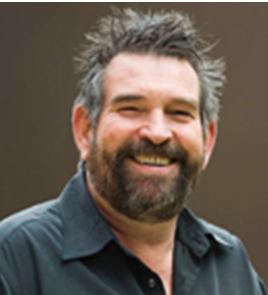
World Institute for
Engineering and Technology Education (WIETE)
SERVING THE INTERNATIONAL ENGINEERING AND TECHNOLOGY COMMUNITY
| WIETE NEWS |
||
 |
7 March 2012 |
|
Unhealthy Science? Dr Ian R. Dobson of the University of Helsinki, Finland, and an associate editor of the Global Journal of Engineering Education (GJEE) and the World Transactions on Engineering and Technology Education (WTE&TE) was commissioned by the Office of the Chief Scientist in Australia to prepare a report on university science over the last decade. The report is one of three commissioned by the Chief Scientist, to assist him in preparing the Health of Australian Science report, due in March 2012. There have been concerns in Australia that too few graduates competent in the enabling sciences of chemistry, mathematics and physics were being produced. The analysis, undertaken between September and November 2011 for the 80-page report, showed that enrolments in science courses increased by 30% between 2002 and 2010, only just behind the sector-wide average of 33%, with over 18,000 more students in science programmes at the end of the decade than in 2002. In comparison, health and management & commerce gained the majority of increased student enrolments with 97,000 and 66,000 more students at the end of the decade, respectively. Engineering enrolments also grew strongly, by nearly 24,000, or 40%. Science overall had the fourth-lowest growth rate for 2002-2010, with enrolments in agriculture (-0.5%), information technology (-34.5%) and education (+23.8%) faring worse. Dr Dobson believes that even if the sciences are no longer in decline, one must ask whether zero-growth is good enough in a technology-based knowledge society. Innovation, he says, is more likely to come out of science and technology rather than from say, management and commerce, the source of much of the growth in university enrolments this century. The report shows that the composition of a science bachelor’s degree changed little over the decade, with biology being the main discipline (35.8%), followed by chemistry and mathematics (about 10% each) and physics and earth sciences (4-5%). Over 26% of an average science degree is made up of subjects from other disciplines. Dr Dobson says that even if there has been a steady state in the natural and physical sciences over the past decade, the damage to the enabling sciences occurred during the 1990s, with the teaching of mathematics and physics to science students declining by 5% and 2%, respectively. Chemistry increased by 16%, but this should be compared with the growth in behavioural sciences (93%), biological sciences (78%) and all other sciences (81%: earth sciences, computing, pharmacology and other). In a period when science students increased their overall science intake by more than 20,000 equivalent full time (student load), the enabling sciences increased by just 414 EFTSL. The report shows that another trend over the past decade has been for science disciplines to have an increasing role as service teaching to students enrolled in courses other than science courses. In 1989, 58% of science was taught to science students. By 2009, it was 46%. This situation has been driven by the expansion in other areas, such as engineering, health and management. Of course, this is not a bad thing, but more graduates in enabling sciences would suit Australia’s high-tech future better. Some long-term comparisons, particularly where science is concerned, are made difficult by changes in classifications of courses and subjects, and in the way the government counts students. However, it is certain that relative place of chemistry, mathematics and physics is not what it was in the 1980s. Dobson, I.R. (2012). Unhealthy science? University natural and physical sciences 2002 to 2009/10. The full report can be downloaded from the Office of the Chief Scientist [here]. Dr Ian Dobson’s career included periods in higher education planning at RMIT (1971-1975), the University of Melbourne (1976-1989) and Monash University (1990-1995) before being appointed as policy adviser to the DVC, later VC, Professor Peter Darvall (1995-2005). Since then he has worked as a freelance statistical analyst and editor/English reviser. He is editor of the Journal of Higher Education Policy and Management and the Australian Universities’ Review, and an associate editor of the GJEE and WTE&TE. He now lives in Finland for much of the year, and is a research director at the University of Helsinki. The photo shows Dr Ian Dobson. Comments and queries: ianrdobson@optusnet.com.au or ian.dobson@helsinki.fi |
||